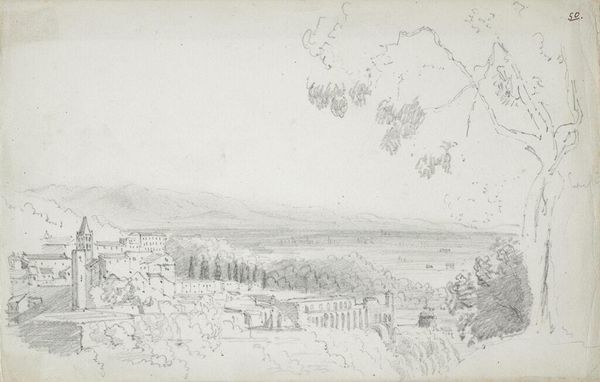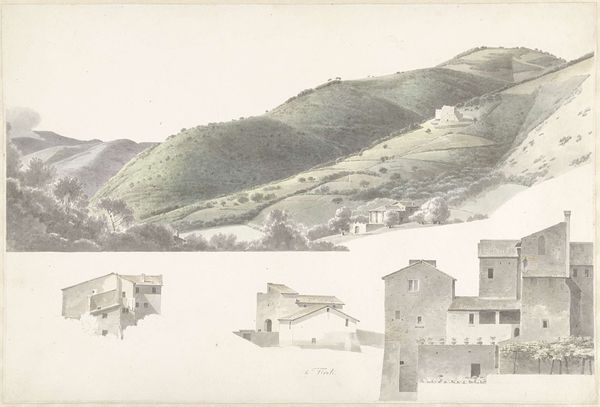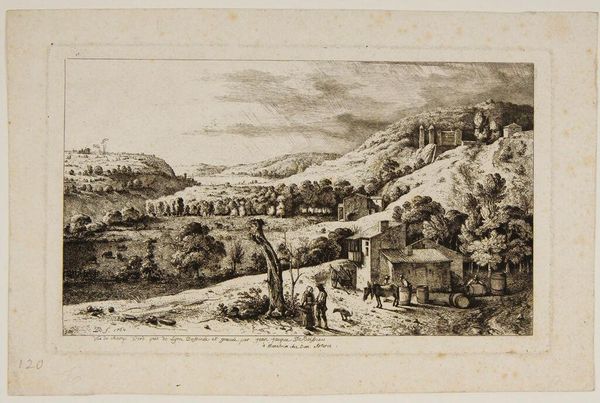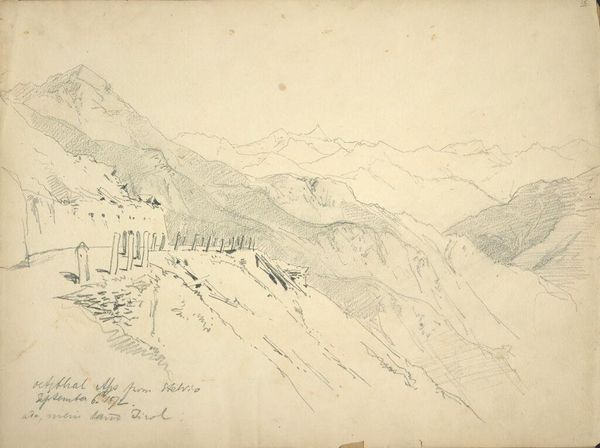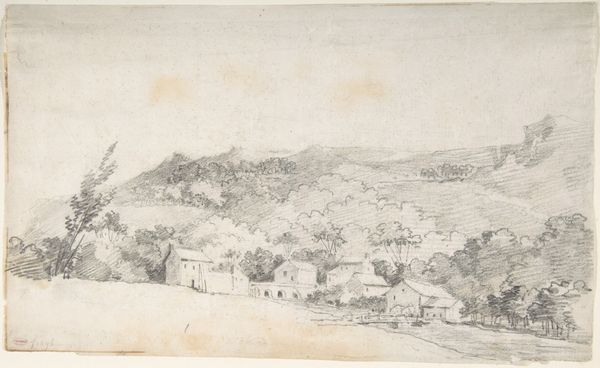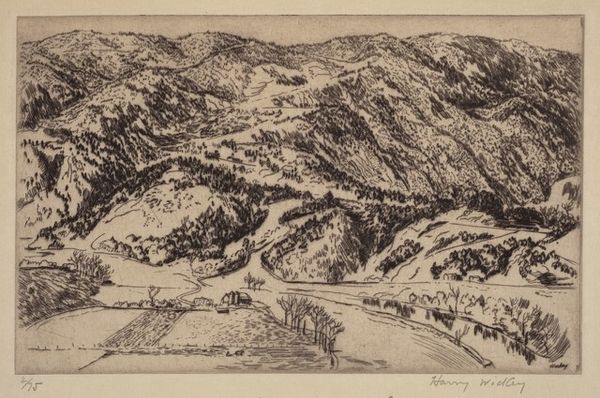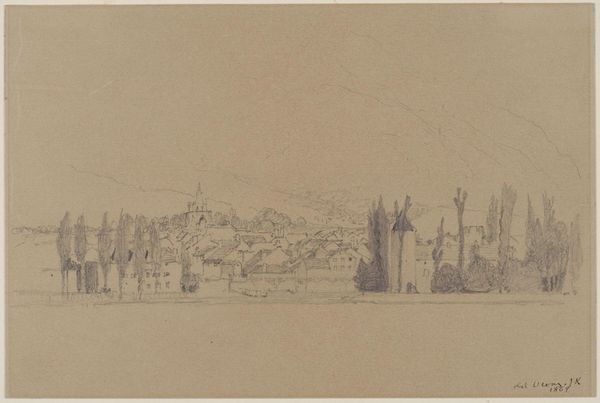
drawing, painting, watercolor
#
drawing
#
painting
#
impressionism
#
landscape
#
etching
#
watercolor
#
cityscape
#
realism
Dimensions: overall (approximate): 30.5 x 37.6 cm (12 x 14 13/16 in.)
Copyright: National Gallery of Art: CC0 1.0
Editor: This watercolor painting is called "Falicon" by David Young Cameron. It renders a hillside village. The colors are muted. It gives the impression of something half-remembered. What elements stand out to you most prominently? Curator: Immediately, the stratified composition strikes me. The work exhibits a tripartite structure: a foreground, middle ground featuring the village, and a background defined by the soft suggestion of distant mountains. The tonality is delicate. Editor: The artist seems to emphasize structure. Curator: Precisely. Notice the terraced fields leading up to the village. The parallel lines create a rhythmic progression. Consider the contrast in textures: the softness of the atmospheric mountains versus the more articulated architectural forms. How does this interplay of textures contribute to the overall aesthetic? Editor: It feels almost like the buildings have been forced into place on top of the landscape itself. There's a slight tension there. Curator: An astute observation. And the restricted palette reinforces this sense of harmony, yes? The artist orchestrates a dialogue between form and surface, drawing the viewer's eye across the pictorial space. Are you sensing a calculated organization of elements? Editor: I think so, because I do keep moving back and forth between those distinct foreground and background areas you pointed out. Curator: The power lies in its structural arrangement and the visual cadence that Cameron achieves. It reminds us of the artist's ability to evoke the essence of a place through purely formal means. Editor: I'm learning to see how seemingly simple choices can build very complex relationships on the canvas.
Comments
No comments
Be the first to comment and join the conversation on the ultimate creative platform.
